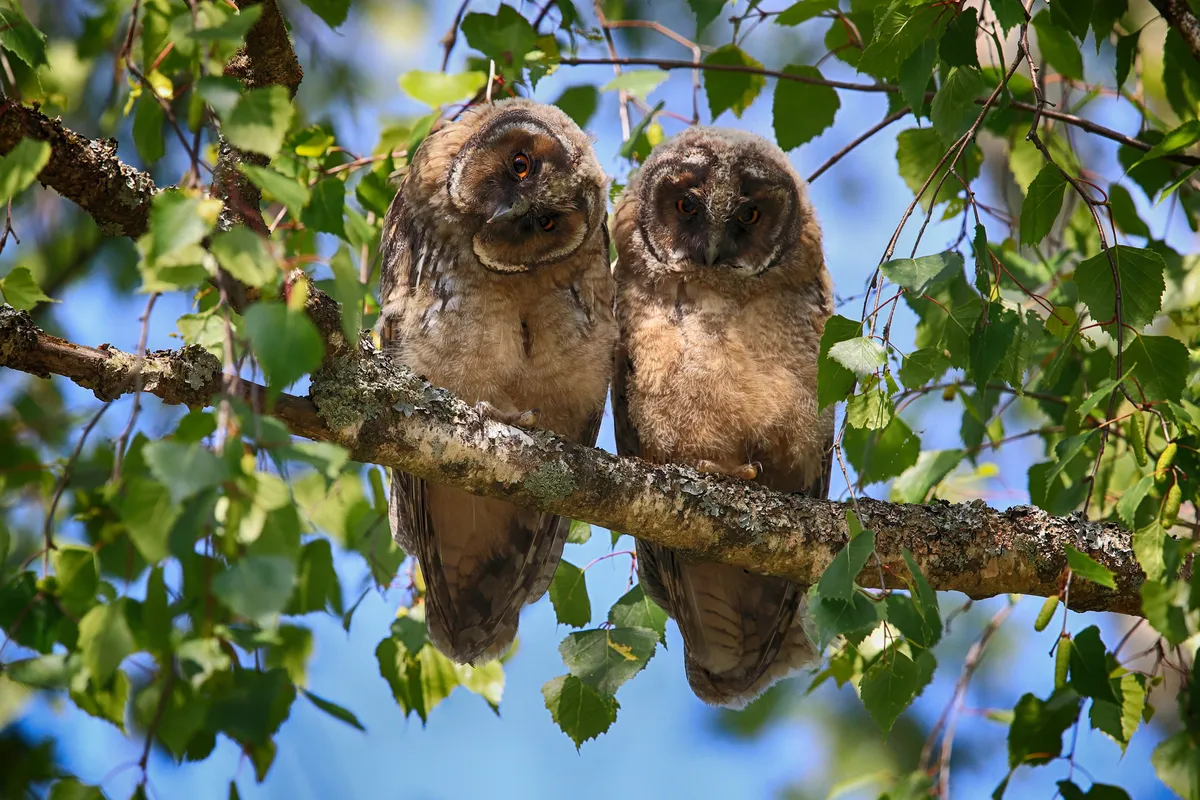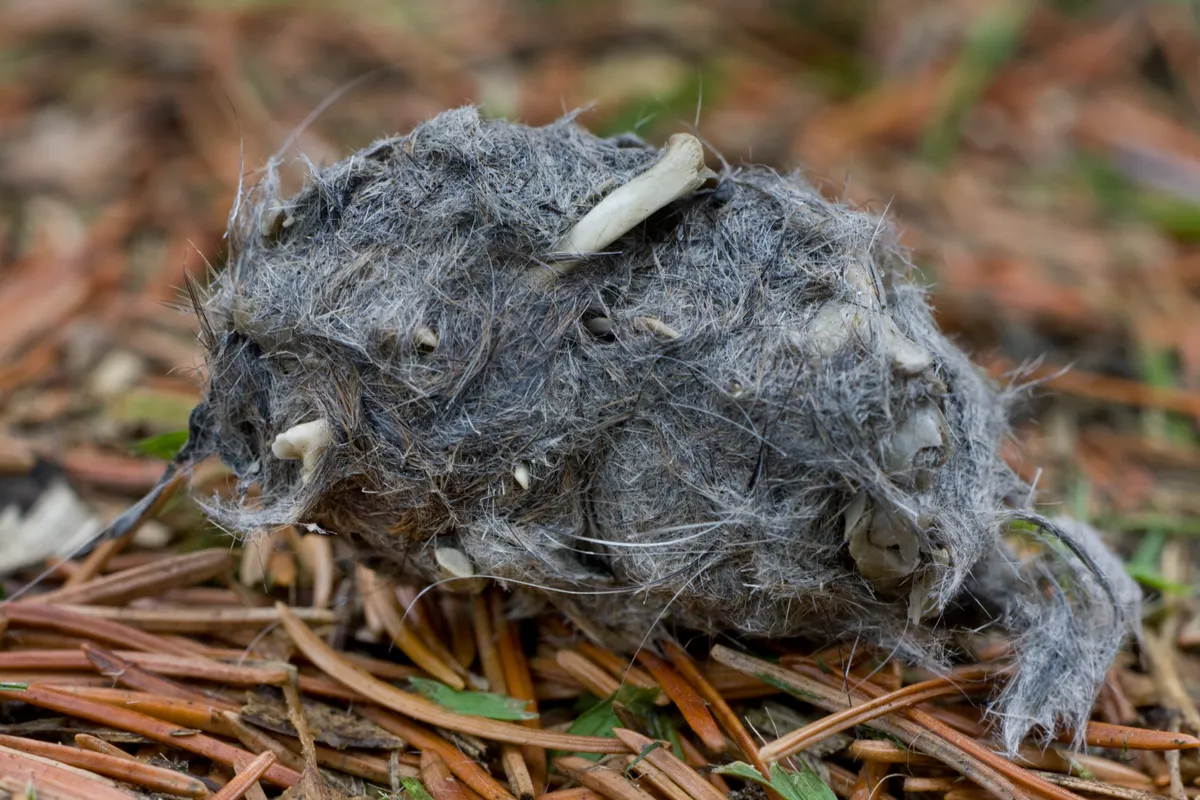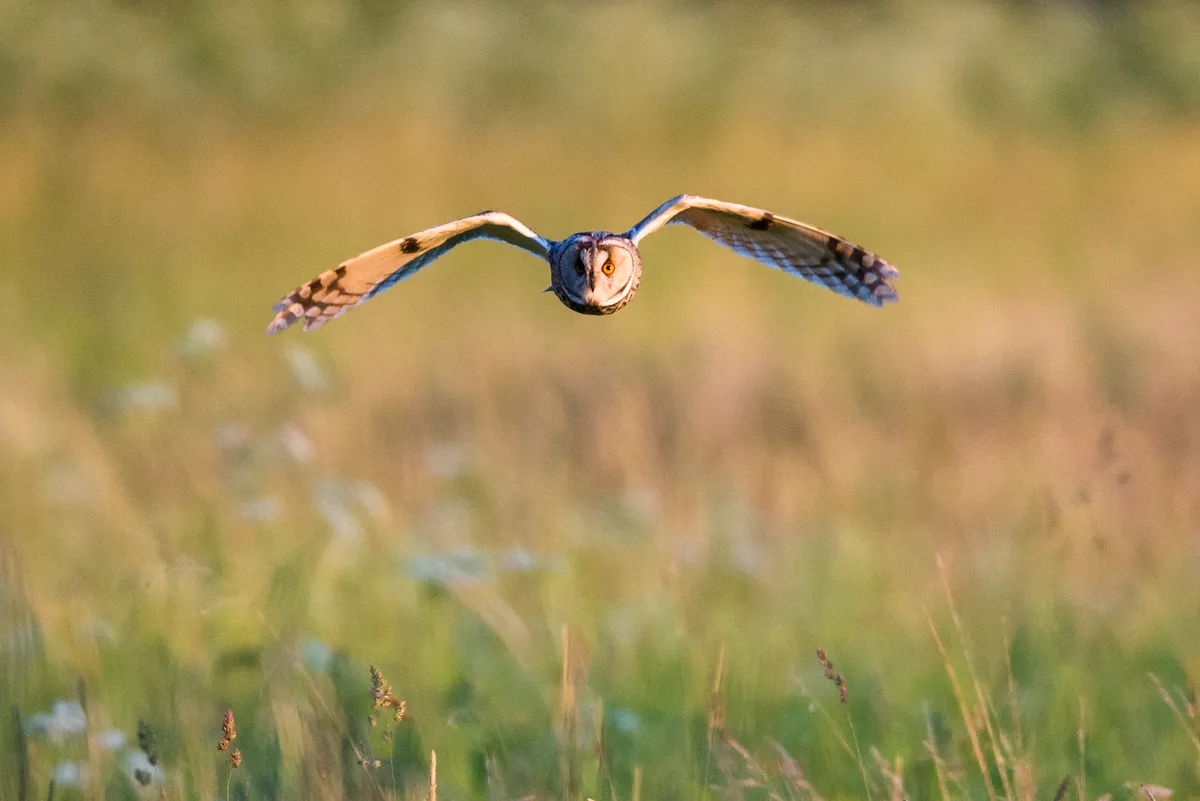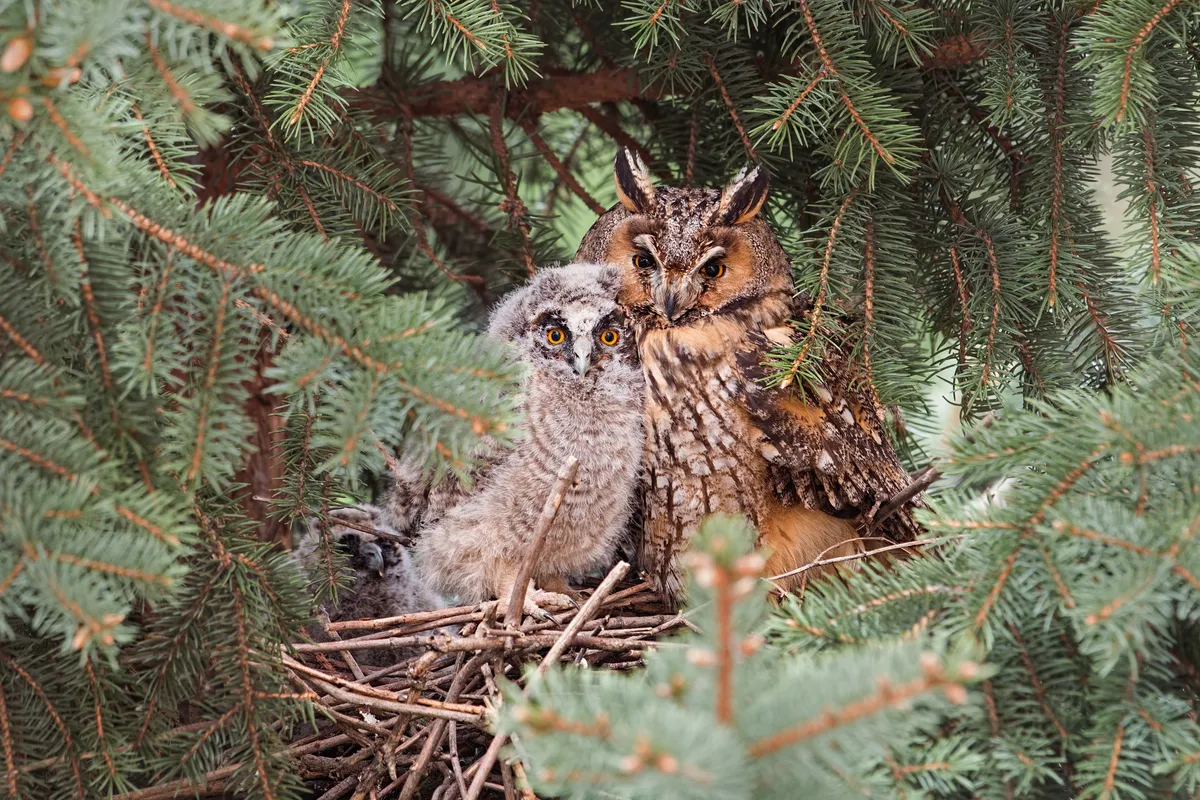The long-eared owl is a very striking bird thanks to its long ‘ears’, which it raises when alarmed. The species is medium in size with a wingspan of 95cm, and lives in dense woodland.
It can be confused with the similar-looking and similarly named short-eared owl, particularly when the long-eared owl has its tufts of feathers laid flat on its head. However there are some key identification features to tell the difference between the two species.
The long-eared owl is one of four native owls in the UK, and one of five resident species here (the additional non-native resident species is the little owl).
Read on to learn more about this nocturnal and elusive owl species in our expert guide by the RSPB:
What is the scientific name of the long-eared owl?
The scientific name of the long-eared owl is Asio otus.
The owls belonging in the Asio genus are known as ‘eared’ owls, due to the tufts of feathers that some of them have, which look like mammalian ears. Not all species of ‘eared’ owls have noticeable tufts or ‘ears’.
In the UK, the only other resident species of ‘eared’ owl is the short-eared owl (Asio flammeus). The other resident species (barn, tawny and little) belong to different genera.

Where are long-eared owls found?
Long-eared owls breeds across the UK, sometimes even migrating from Europe to spend the winter in the ‘warm’ UK. They favour conifer plantations or scrub thickets, keeping very well hidden and using their camouflage to amazing effect.
How to identify long-eared owls
The most distinctive markers of a long-eared owl are, as you may imagine, its tall head feather ‘ears’, which are more distinctive than those of the short-eared owl.
It will raise these when alarmed, presenting a striking figure when combined with its deep orange eyes. If the tufts are laid flat, it can be confused with the short-eared owl. However the short-eared owl has yellow eyes and is generally paler in colour.
The long-eared owl is about the size of a woodpigeon, and is quite long and thin with brown feathering.
How to identify long-eared owl pellets
Their pellets are long, irregular and very slender, rounded at one or both ends – similar to a tawny owl, but normally less grey. Most of their feathers have an intricate black, brown and buff patterning that stripe across the entire length , though some of the smaller feathers have a more simple black and white blocking.

What do long-eared owls sound like?
The female’s main call sounds a bit like a baby squalling – a soft, plaintive complaint. The nest-call is a nasal buzzing sound, a bit like a lamb or high-pitched sheep, and is used to attract a male.
The male’s call is more akin to the stereotypical owl hoot, sounding a bit like someone blowing over the top of a bottle.
Both tend to only hoot during the breeding season, keeping their song silent the rest of the year.
Perturbed long-eared owls can also snap their mandibles together to make a loud pop, or clap their wings together below the body while flying to produce a whip-like sound.
What do long-eared owls eat?
The main food of long-eared owls is small mammals, such as mice and voles, though they have been known to eat small birds in tough winters when food is scarce.

What predators do long-eared owls have?
Studies have found that other birds of prey go after long-eared owls, including eagle owls, tawny owls, goshawks and peregrines. Female long-eared owls have also been seen dive-bombing foxes, suggesting they are also a considered a threat.
How numerous are long-eared owls?
There are between 1,800-6,000 breeding pairs in the UK, with best guess around 3,500. It’s difficult to tell with such an elusive owl!
How long do long-eared owls live for?
Long-eared owls normally live about four years, though they have been known to live into their teens.
How many eggs do long-eared owls lay?
The female will lay three to five eggs a year which hatch after about a month. Rather than building their own nest, they prefer to settle in the old nest of another species such as crows or magpies.
The male will bring food to the female who will then feed the chicks until they are ready to leave the nest. They are also known to nest on the ground at the base of a tree or hedge, and will readily take to artificial wicker basket ‘nests’ if provided.

Are long-eared owls endangered?
It’s difficult to accurately monitor nocturnal species, but the numbers we do have indicate that the long-eared owl is doing well across the UK.
What can I do to help long-eared owls?
The British Trust for Ornithology are running Project Owl to gather data and information on owls across the UK, including long-eared owls. This will help us to better understand their helps, and how we can help them.
As these owls tend to nest in other birds disused nests, you can help by putting out your own ‘nests’! This can be as simple as a wicker basket. You can also help to build up their number one prey, field voles, by allowing grass verges to grow wild.
The RSPB is the UK’s largest nature conservation charity, inspiring everyone to give nature a home. Together with our partners, we protect threatened birds and wildlife so our towns, coast and countryside will teem with life once again. We play a leading role in BirdLife International, a worldwide partnership of nature conservation organisations.
Main image: Long-eared owl perched and resting in a tree. © Sander Meertins/Getty Images

